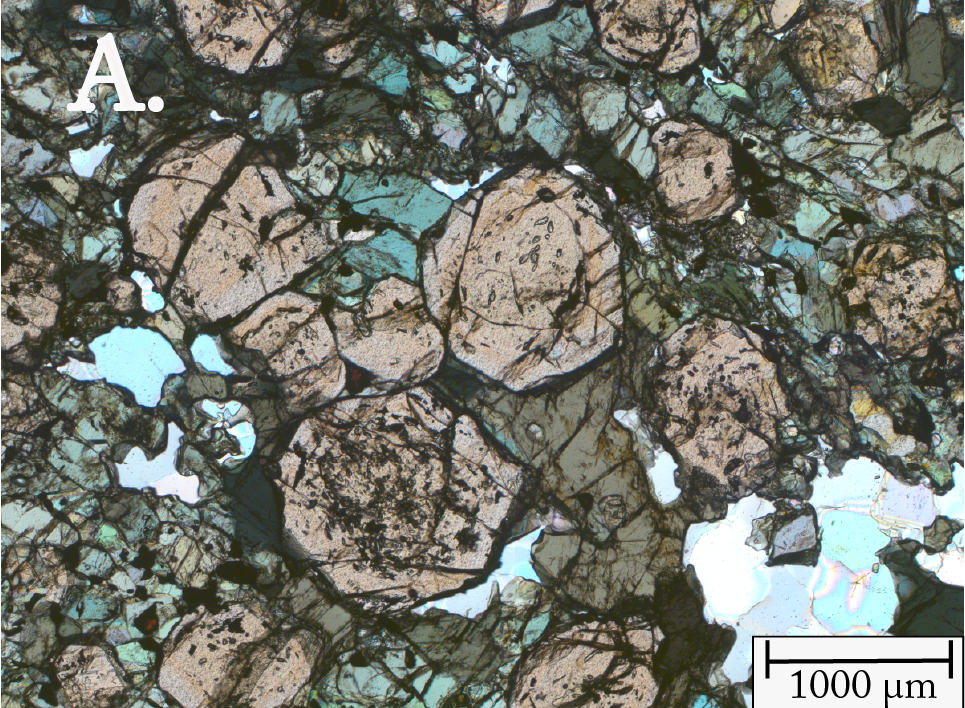News
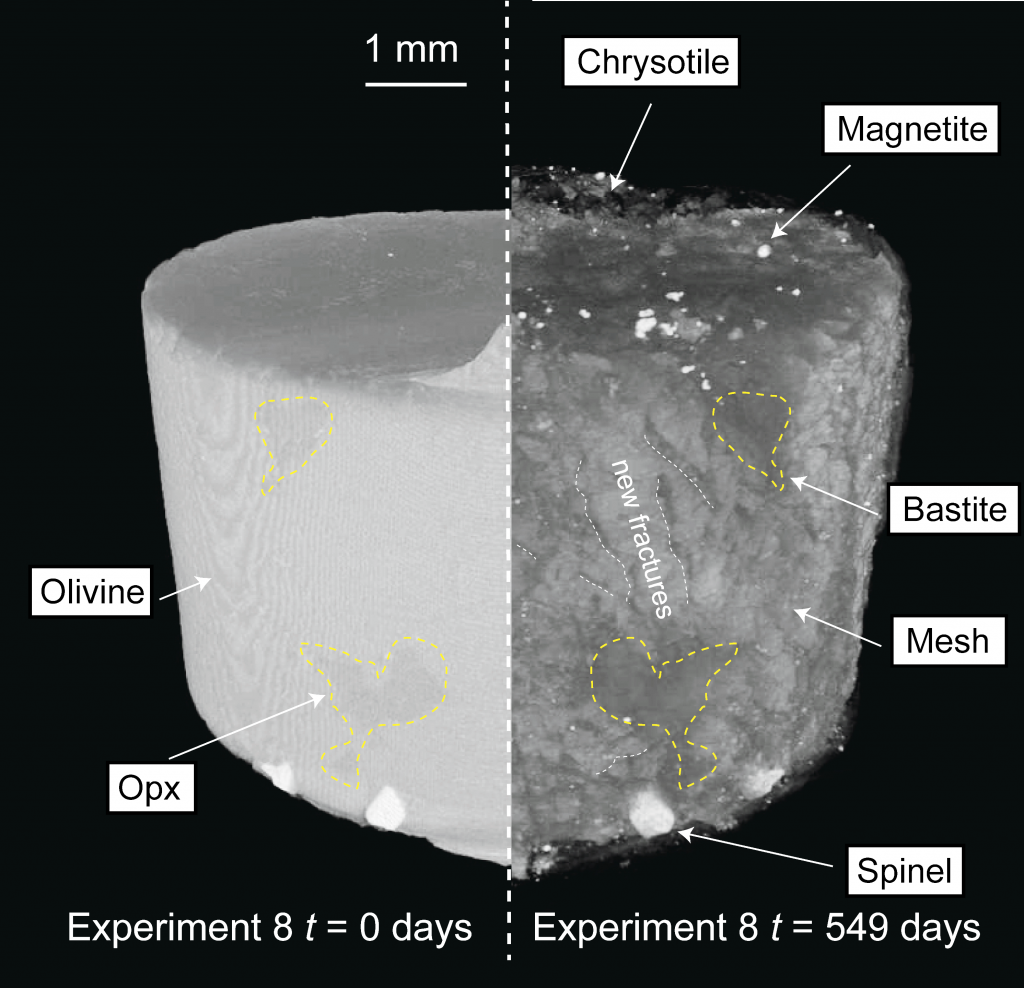
Quantifying the concurrent changes in rock volume and fluid composition during serpentinization remains a major challenge in assessing its physicochemical effects during continental rifting, seafloor spreading, and subduction. Here we conducted a series of 11 hydrothermal laboratory experiments where cylindrical cores of natural dunite, harzburgite, and pyroxenite were reacted with an aqueous solution at 300 °C and 35 MPa for up to 18 months. Using three-dimensional microcomputed tomography and thermogravimetry, we show that rock volume systematically increased with time and extent of reaction, leading to a volume increase of 44% (±8%) in altered rock domains after 10–18 months of serpentinization. The volume expansion was accompanied by Mg-Ca exchange between fluid and rock, while Fe and Si were largely conserved. We find that the protolith composition (olivine/orthopyroxene ratio) plays a significant role in controlling the fluid chemistry and the proportions of hydrous secondary minerals during serpentinization. Agreement between alteration mineralogy, composition of reacting fluids, and measured volume changes suggests that serpentinization under static conditions is a volume-increasing process in spite of demonstrable mass transfer. Volume expansion implies an increased water carrying capacity and buoyancy force of serpentinite per unit mass of protolith, while Mg-Ca exchange during serpentinization may affect the Mg/Ca ratio of seawater on Earth and possibly other ocean worlds.

Congratulations Emman!
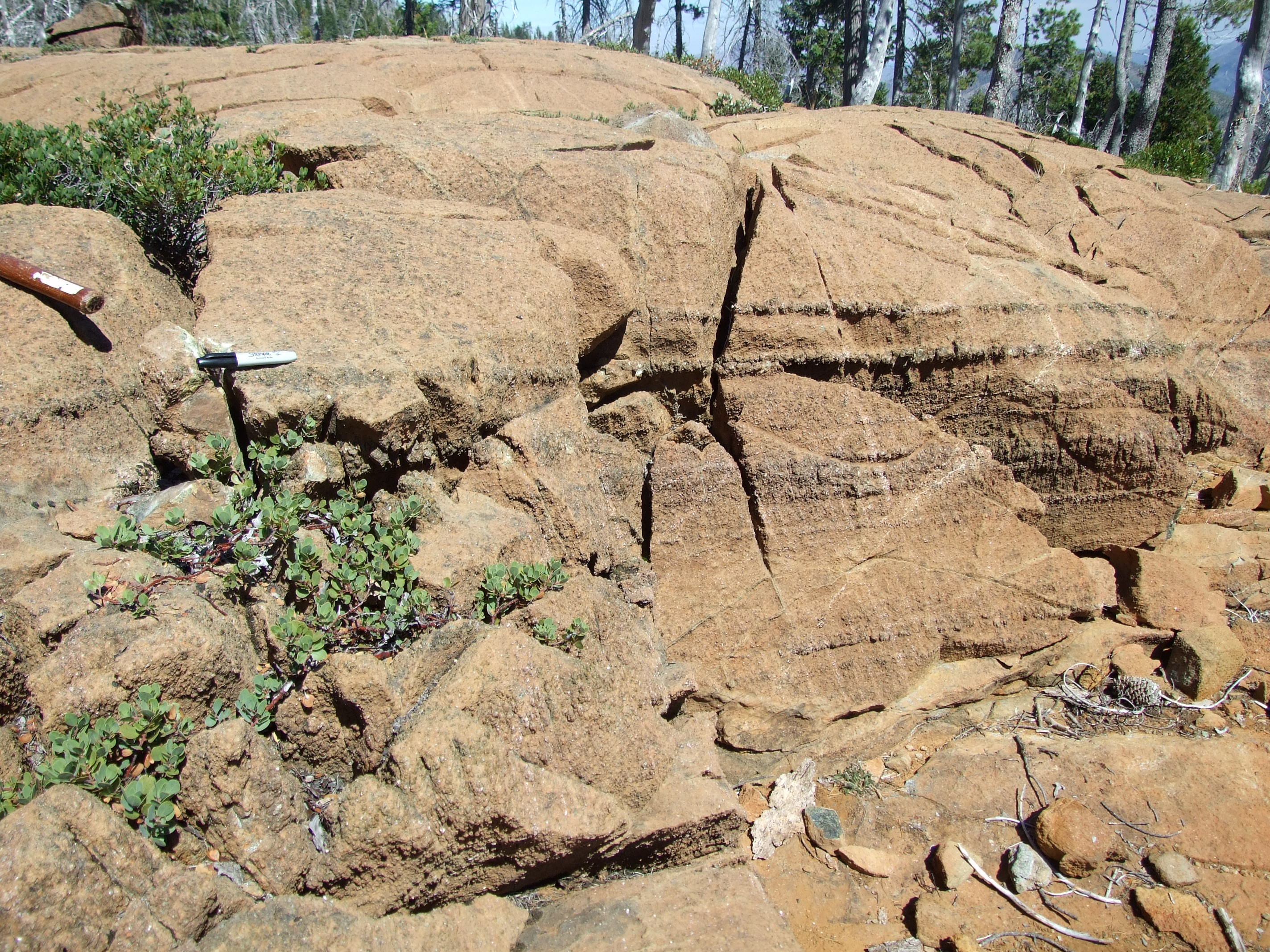
The peridotite section of supra-subduction zone ophiolites is often crosscut by pyroxenite veins, reflecting the variety of melts that percolate through the mantle wedge, react, and eventually crystallize in the shallow lithospheric mantle. Understanding the nature of parental melts and the timing of formation of these pyroxenites provides unique constraints on melt infiltration processes that may occur in active subduction zones. This study deciphers the processes of orthopyroxenite and clinopyroxenite formation in the Josephine ophiolite (USA), using new trace and major element analyses of pyroxenite minerals, closure temperatures, elemental profiles, diusion modeling, and equilibrium melt calculations. We show that multiple melt percolation events are required to explain the variable chemistry of peridotite-hosted pyroxenite veins, consistent with previous observations in the xenolith record. We argue that the Josephine ophiolite evolved in conditions intermediate between back-arc and sub-arc. Clinopyroxenites formed at an early stage of ophiolite formation from percolation of high-Ca boninites. Several million years later, and shortly before exhumation, orthopyroxenites formed through remelting of the Josephine harzburgites through percolation of ultra-depleted low-Ca boninites. Thus, we support the hypothesis that multiple types of boninites can be created at dierent stages of arc formation and that ophiolitic pyroxenites uniquely record the timing of boninite percolation in subduction zone mantle
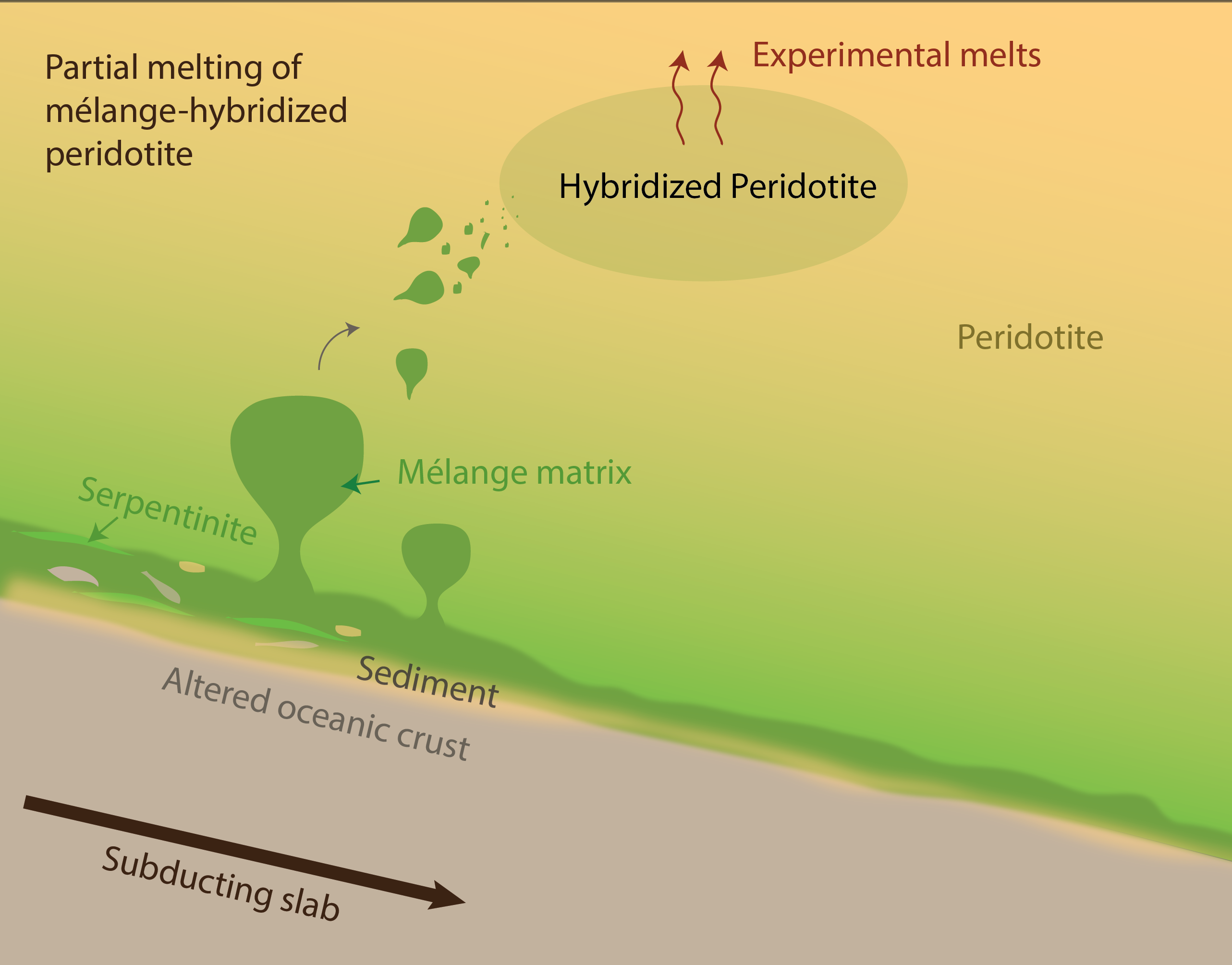
Emmanuel Codillo (now PhD student in Le Roux’s group) just published the work he performed as an undergraduate guest student at WHOI!
The mechanisms of transfer of crustal material from the subducting slab to the overlying mantle wedge are still debated. Mélange rocks, formed by mixing of sediments, oceanic crust, and ultramafics along the slab-mantle interface, are predicted to ascend as diapirs from the slab-top and transfer their compositional signatures to the source region of arc magmas. However, the compositions of melts that result from the interaction of mélanges with a peridotite wedge remain unknown. Here we present experimental evidence that melting of peridotite hybridized by mélanges produces melts that carry the major and trace element abundances observed in natural arc magmas. We propose that differences in nature and relative contributions of mélanges hybridizing the mantle produce a range of primary arc magmas, from tholeiitic to calc-alkaline. Thus, assimilation of mélanges into the wedge may play a key role in transferring subduction signatures from the slab to the source of arc magmas.
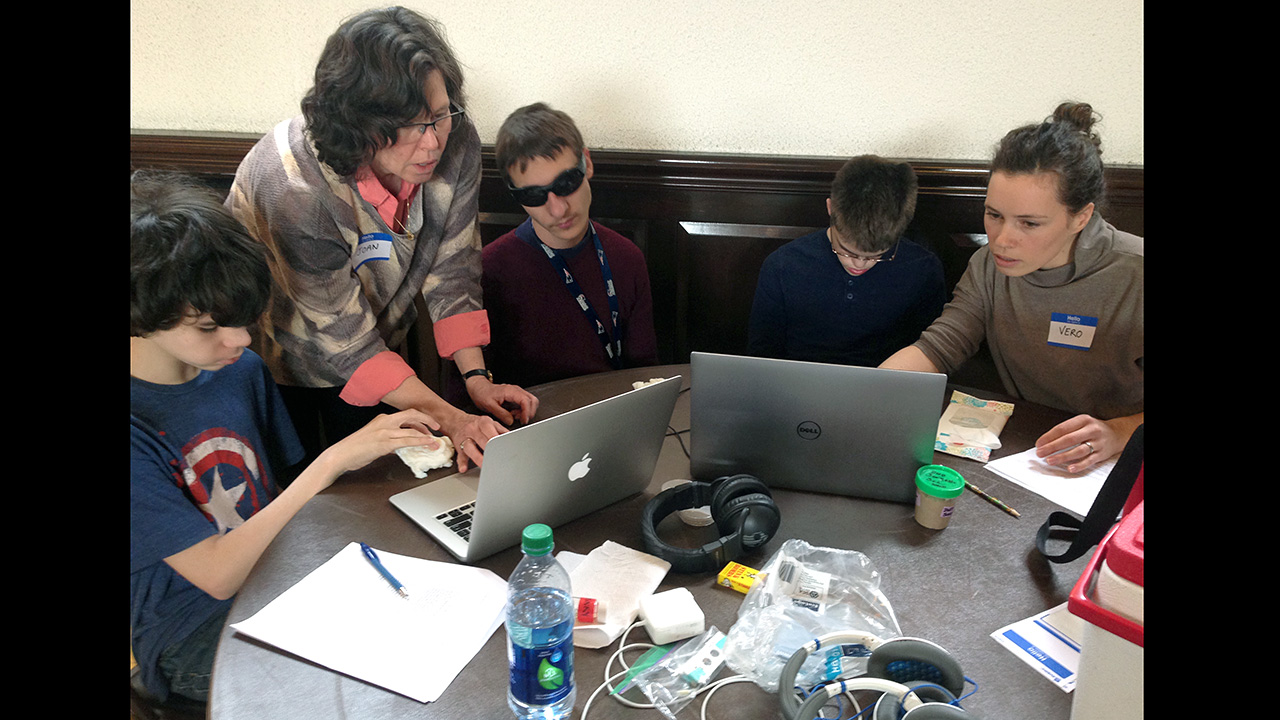
A great outreach event with geobiologist collaborator Joan Bernhard. This spring, we introduced students at the Perkins School for the Blind to foraminifera, or forams: small, single-celled organisms that abound in ocean waters and seafloor sediments. Joan collected a variety of forams which were scanned using x-ray micro-computed tomography in the Mantle Rocks lab. The computer models were then enlarged, 3-D printed, and chilled or warmed to reflect their native habitats. The students handled the models while listening to related audio, creating a multisensory experience. For example, for a deep-sea species, the model was refrigerated, and the students heard a recording of communications between the research vessel Atlantis and WHOI’s human-occupied submersible Alvin.
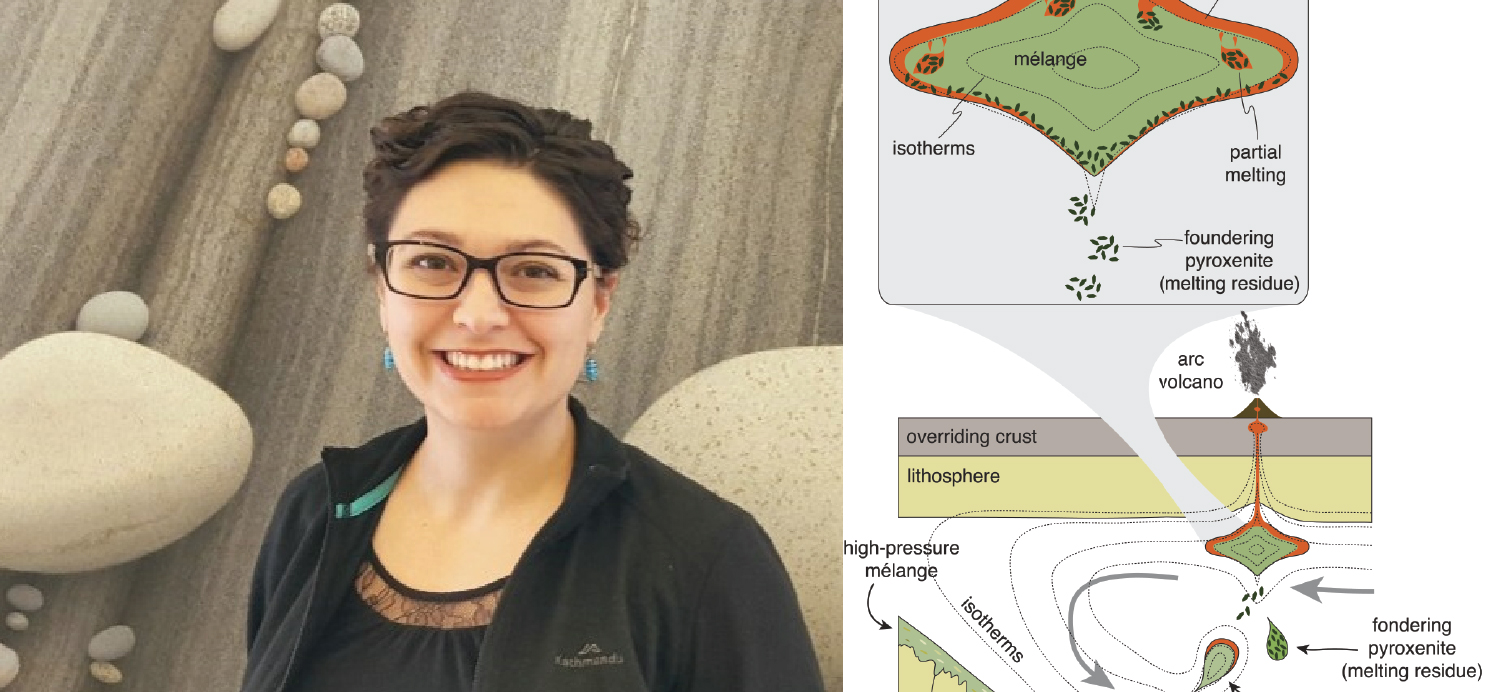
Alicia ‘Cici’ Cruz-Uribe (WHOI postdoc 2014-2015) has just published her work on melange melting in Geology.
“Here we report results from experiments in which natural mélange materials were partially melted at upper mantle conditions to produce alkaline magmas. Partial melts produced in our experiments have trace-element abundance patterns that are typical of alkaline arc lavas, such as enrichment in large ion lithophile elements (LILEs) and depletion in Nb and Ta. These results favor generation of alkaline magmas in the arc and backarc regions of subduction zones by partial melting of mélange materials rather than previously metasomatized peridotite.”
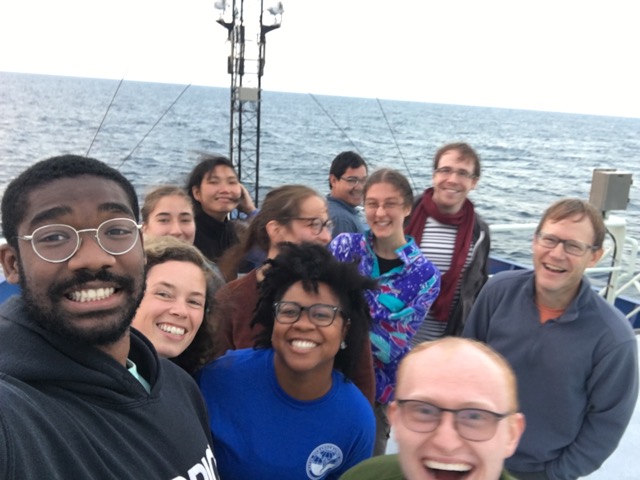
The SCARF 2017 student-led cruise is back on shore! After a few days in the Azores we sailed across the mid-Atlantic ridge aboard the R/V Neil Armstrong and acquired bathymetry, gravity and magnetics data along a flow line. It was an amazing adventure!
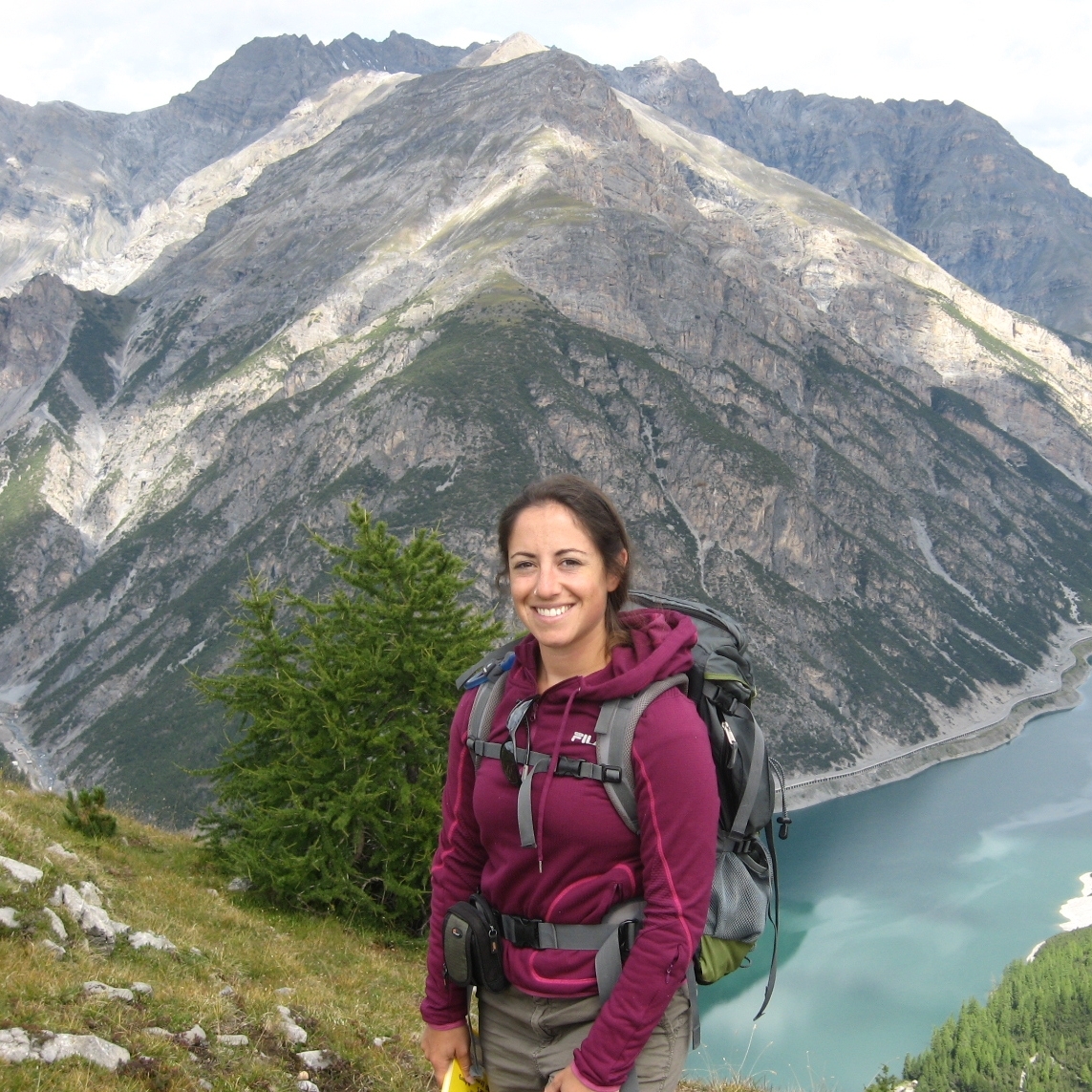
Emily just started a Doherty Postodoctoral scholar at WHOI and is working on (U-Th)/He thermochronology and trace element geochemistry to 1) date magnetite that form during fluid alteration, 2) investigate the geochemical fingerprints of serpentinization at different tectonic settings, and 3) constrain the thermal history of mantle peridotites. Emily has extensive experience with anything outdoorsy and all sorts of fieldwork. She will be working with several WHOI scientists, including Frieder Klein and myself.
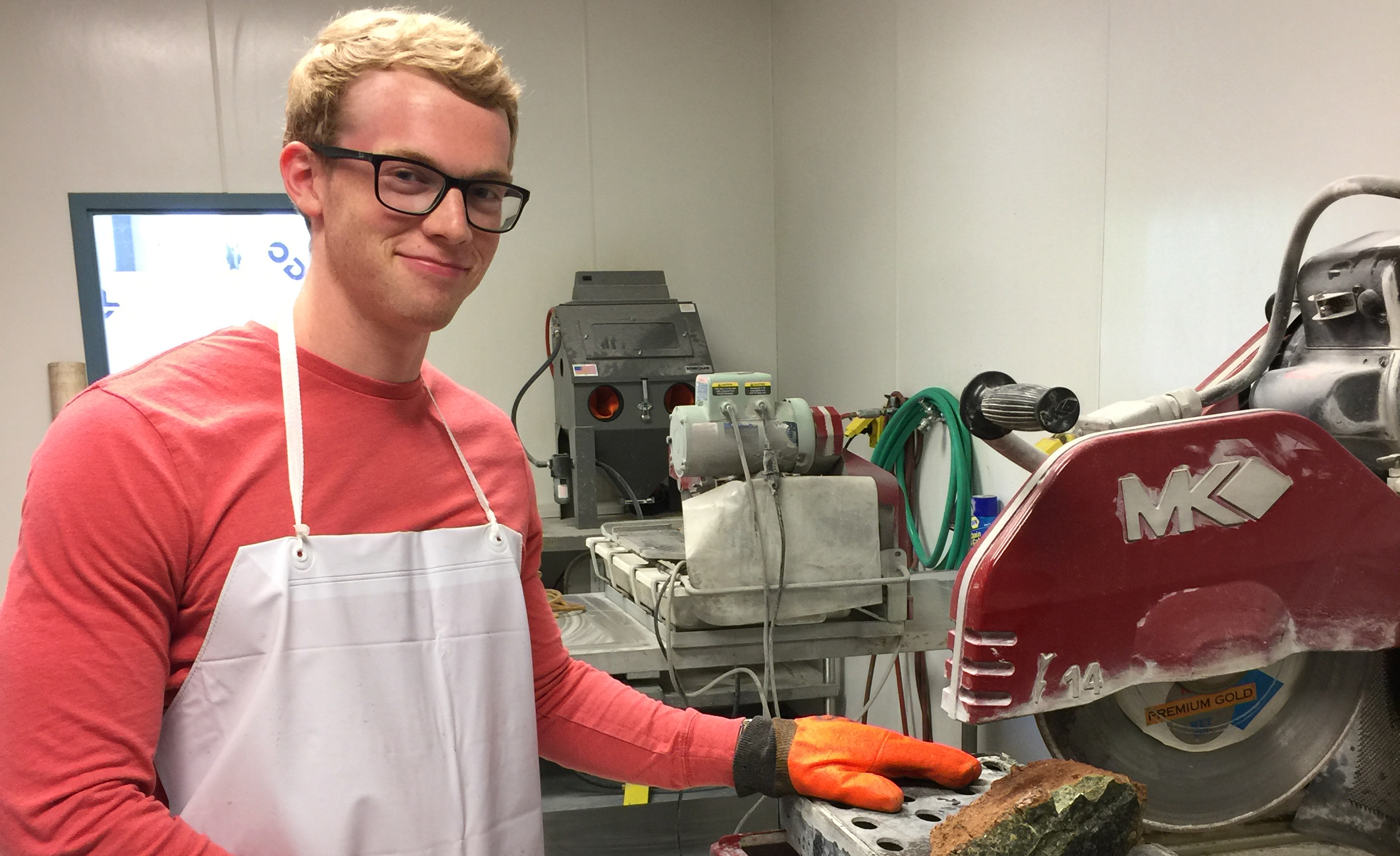
Taylor comes from Brown University and is a 2017 Summer Student Fellow working on the formation of pyroxenites in the Josephine Ophiolite (Oregon). He is using EPMA, LA-ICP-MS, REE closure temperatures and Nd isotopes by MC-ICP-MS to decipher the timing of vein formation in the mantle.

